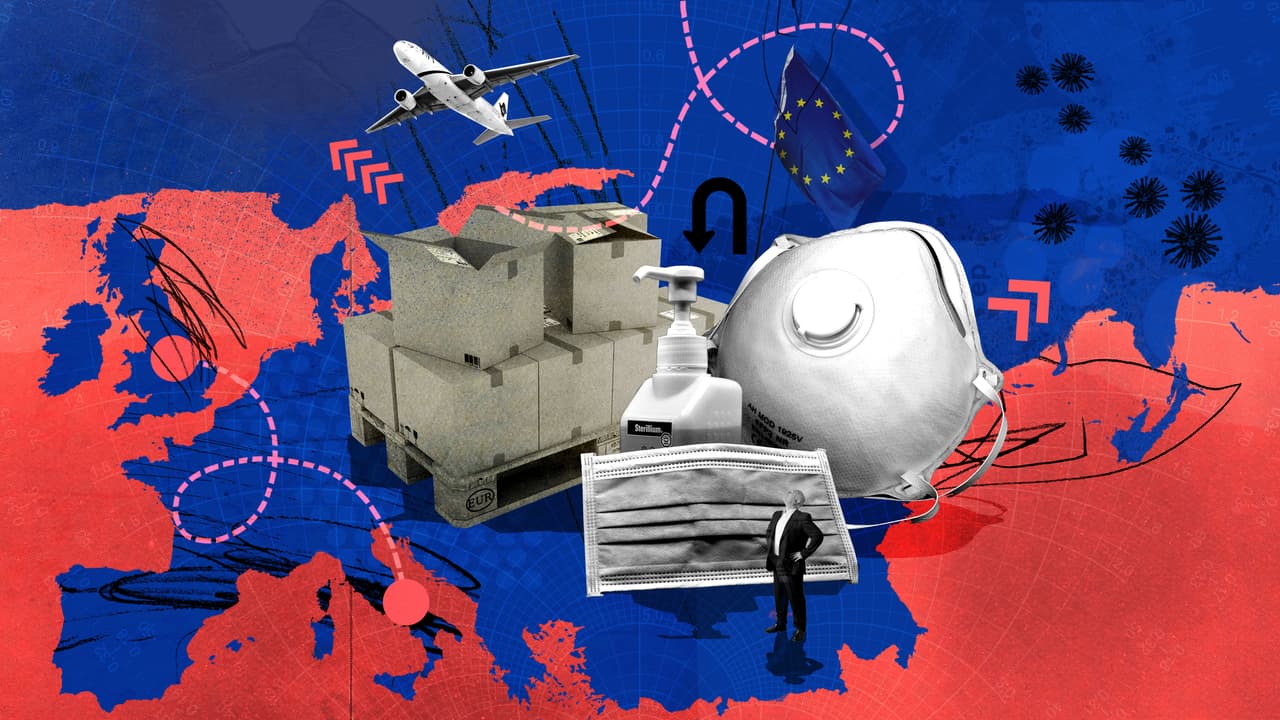
Crisis at the commission: inside Europe’s response to the coronavirus outbreak
Early in the morning of 23 February, an aircraft took off from Vienna carrying 25 tonnes of personal protective equipment (PPE), including masks and gloves, to China. The city of Wuhan, where Covid-19 first emerged, had been in lockdown for a month. Nearly 2,500 people had died across the country. Moved by the crisis, EU member states had donated 56 tonnes of supplies to China in February.
Meanwhile, four regions in northern Italy were in the early throes of a deadly outbreak. Despite assurances throughout January and February that Europe was successfully containing the virus, it had silently taken hold of the continent and officials were beginning to realise that a larger crisis was looming.
Just three days after the flight to China, Italy asked the European commission, which manages the day-to-day business of the EU, for masks. The situation was becoming increasingly urgent, and hospitals in the region were at risk of being overrun. But its call for help was met by silence. There was no PPE to give.
The Bureau has reviewed meeting records and interviewed the EU officials and experts involved in the response to the pandemic. Our reporting shows that complacency, confusion and a lack of coordination in the early months of 2020 plunged Europe into increased crisis. Communication was poor and meetings too short; lessons from the 2009/10 H1N1 (swine flu) influenza outbreak went ignored and countries chose protectionism over cooperation.
In less than two months, Europe went from blithely calling the virus a “Chinese problem” to being described as the “epicentre” of the global pandemic by the World Health Organization (WHO). The coronavirus shook the foundations of European solidarity and proved to be the greatest collective crisis faced by the continent since the Second World War.
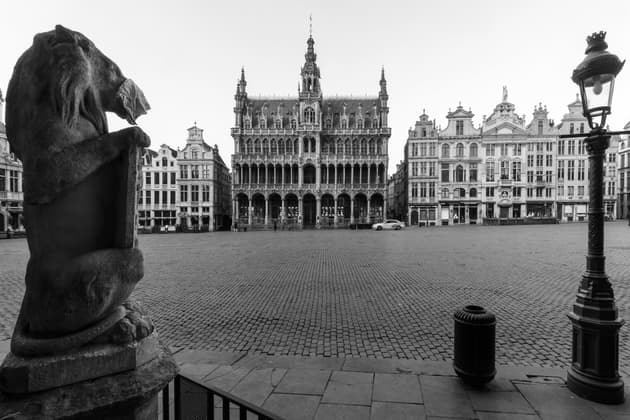 The Grand Place in Brussels
Getty Images
The Grand Place in Brussels
Getty Images
“We can’t make any decisions”
On 17 January the first coronavirus conference call was held by the European commission’s health security committee, comprising representatives from various ministries of health. Just 12 – fewer than half – of the 27 member states, plus the UK, phoned in.
The EU has no legal mandate on health, which remains a national issue under the control of individual member states. The committee started out as an informal advisory group, but after the H1N1 influenza outbreak, the commission gave it the responsibility of coordinating responses to cross-border threats to health in Europe.
Wolfgang Philipp, the head of a small team within the commission’s health department in Luxembourg, chaired the meeting. He told those present that a few dozen people in Wuhan had been infected with a new strain of coronavirus; most were believed to be linked to a seafood market in the city. Three cases had been confirmed outside the country: two in Thailand and one in Japan – all recent visitors to Wuhan. The WHO was yet to confirm human-to-human transmission.
With 300,000 people expected to travel to Europe from China in January, many to celebrate Chinese New Year on 25 January, the question was what to do about direct flights from Wuhan to London, Paris and Rome.
Screening all airport arrivals with symptom checkers and thermometers was believed to be largely ineffective in stopping the spread of the virus, an official from the European Centre for Disease Prevention and Control (ECDC) told the committee. But they recommended targeting passengers on the 12 weekly flights arriving in Europe from Wuhan.
The UK and France shared information about what they were doing at their airports. But there was no update from the Italian government, one of the many absentees. Why did the Italian representative miss that first meeting? He simply didn’t see the email inviting him.
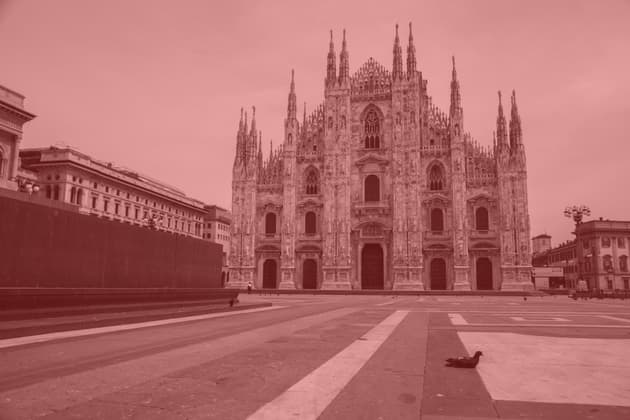 A deserted Milan. Italy soon became one of the worst-hit countries in the EU
Getty Images
A deserted Milan. Italy soon became one of the worst-hit countries in the EU
Getty Images
Even at this early stage, there were signs of the difficulties the commission would face in trying to coordinate a Europe-wide response.
Although governments are required to tell the health security committee before implementing measures, an obligation they were reminded of on multiple occasions, action was taken in some cases without informing neighbours. Committee members were stymied by the format and length of the meetings – typically only an hour with about 100 people attending – which limited the amount of communication and cooperation possible.
One attendee told the Bureau that some countries did not give the committee the “weight that it deserves”. The committee has met about once a week throughout the crisis, except in the last two weeks of January when it doubled its efforts. However, its ability to coordinate members effectively was called into question.
“There was no time to catch up on events during the time span of one week,” the source said. “Events happened at a tremendous speed.”
Another source, briefed on the discussions at the committee, said: “We can’t make any decisions. It’s a coordination tool to inform each other and that’s already a lot.
“When it comes to preparedness for the crisis it’s important that we know which measures member states are going to take. But even the committee is informed after the measures are taken. At the beginning, we took measures without informing each other.”
The committee had planned to release recommendations on what measures should be taken at borders, but the attendees could not agree on the details.
On 30 January, the Italian government banned all flights to and from China. A few days later, Italian airport staff started taking the temperature of all arrivals. Airlines across Europe began grounding flights to China.
The head of the European commission’s health department, commissioner Stella Kyriakides, would later warn that “measures are being implemented in a variety of ways at points of entry into the EU. And information on such measures is not always shared quickly enough.” She called for a “coordinated, proportionate, science-based” approach.
The European commission spokesperson told the Bureau that the coronavirus outbreak was “of unprecedented nature and proportions. However, the commission soon felt the danger. The commission reacted very early and almost immediately warned about the danger this virus poses to health publicly in a straightforward manner, even before the WHO.”
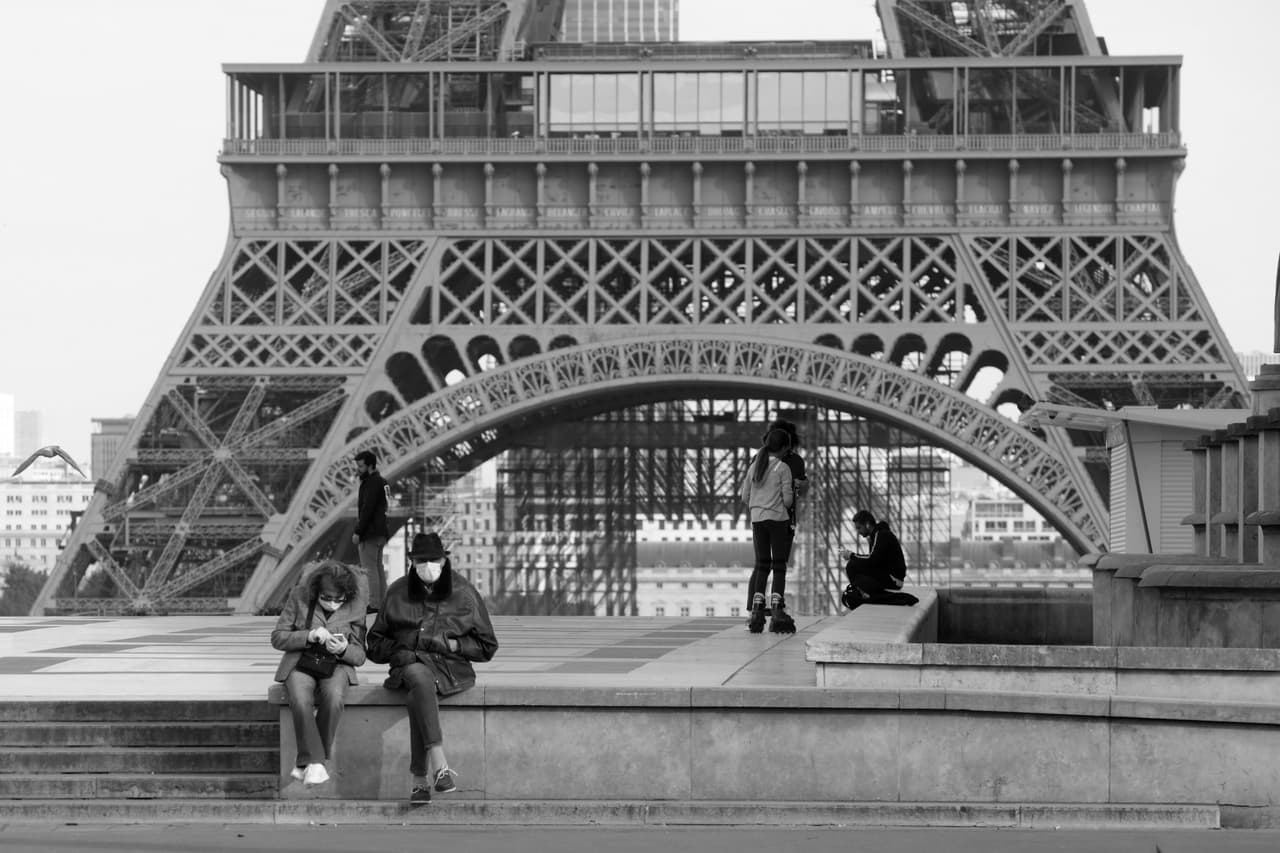
“A prompt and effective response”
As information trickled out of China, experts at the European Centre for Disease Prevention and Control worked to untangle what was happening. ECDC officials attended health security committee meetings, advising the commission and member states on the threat of the virus. Early reports cautioned against drawing conclusions about the risk posed by this relatively unknown strain of coronavirus to Europe. It appeared to still be largely confined to China and remained an external threat.
The European commission has a team for crisis management, led by Janez Lenarčič, whose role is to be “prophets of doom, to expect the worst so we can respond the best”, an insider said. But by the end of January, the team had been to only one of four committee meetings, despite being invited to all of them. In its absence, the commission’s health department had done its own “preliminary assessment” and found a “strong level of preparedness” based on information provided by member states, according to meeting minutes.
On 27 January, Italy requested a council meeting of European health ministers on the coronavirus. Its government was pushing for stricter entry screening measures across Europe. It took almost three weeks for the meeting to happen. At that time, coronavirus was seen as an issue for the experts, not politicians, an EU source said when asked about the delay. The council meeting was not very useful, they said.
When ministers finally met on 13 February, a handful of cases had been confirmed within the EU. The response to the coronavirus threat had been “prompt and effective”, declared the Croatian minister of health, who chairs the council meetings.
However, an internal ECDC report, seen by the Bureau and dated the day after the meeting, details a litany of things that were still unknown about the virus and its risks to Europe. Despite the commission’s assessment two weeks earlier and assurances given to the public, the ECDC report says that the “preparedness status in different member states” was “uncertain” at the time.
“Most of the masks were destroyed”
In reality, in the months and years before coronavirus arrived in Europe, stocks of PPE had dwindled. Emergency supplies of masks had expired, been destroyed and never replaced. Pandemic preparedness plans were out of date.
“Several European countries had a strategic stock of masks that were outdated… Most of them were just destroyed,” a scientific adviser told the Bureau. Replacing these stockpiles was “probably not a high priority”.
France, for example, held 1.7 billion protective masks in 2011, but now had only 117 million. Between January and March this year it burnt 1.5 million. In 2017, Belgium ordered the destruction of 38 million masks. They were never replaced.
By mid-February, ECDC was still finalising advice on pandemic measures such as border controls and PPE, which hadn’t been updated since the swine flu outbreak of 2009-2010. A draft version obtained by the Bureau recommends that countries hold stockpiles of masks. The “production capacity of surgical facemasks would be rapidly exceeded” during a pandemic, the document says.
ECDC officials had been working on the new guidelines since 2018. But experts had requested revisions in September and at a meeting in February they decided that it was still not yet ready to be released to the public. By this point, it was probably already too late.
It also took seven years after swine flu for the WHO and ECDC to update their guidelines on how to prepare for an influenza pandemic. These were published in 2017 but few member states had updated their plans in line with the new guidance, according to a list compiled by the ECDC.
Mike Catchpole, the ECDC’s chief scientist told the Bureau such plans were “the core of preparedness” for the coronavirus, given that both swine flu and Covid-19 are respiratory viruses.
There were, however, some lessons learnt from the swine flu outbreak. The commission extended its joint procurement scheme – a process by which member states buy as a collective – to include medical equipment, such as masks, ventilators and even drugs.
The feasibility of the European commission holding a central stock of protective equipment had also been discussed at a number of council meetings. But little action had been taken. “Now everybody’s like, ‘Oh yeah, we should have had that,’” an EU source said. “I believe that everybody now realises that having a European stock is better than having it for every member state individually.”
When it became apparent that there were severe shortages of PPE in Europe, and the joint procurement scheme was proving ineffective, the commission began to build a central stockpile. In mid-March it announced that it would pay for a stockpile of masks to be held in member states through a scheme introduced last year called RescEU. While member states would be responsible for procuring the supplies, the commission would manage their distribution and cover most of the costs. So far, the scheme has provided about 350,000 masks from Germany and Romania but by April, Europe needed some 10 million masks every day, according to some estimates.
A source involved in setting up RescEU said: “We realised that in certain cases, like today with Covid, when member states are all affected in a global, joint way, at a certain point solidarity no longer works because everyone is preoccupied with responding to their own emergencies.”
The commission remains dependent on the member states sourcing the equipment. Would it have helped if it could buy supplies on its own? “Yes, it would. That’s the whole point of pooling effort. Instead of relying solely on the response capacity of the member states, the fact that the commission is able to procure itself would be of value at a European level,” the source said.
Whether the RescEU stockpiles will continue beyond the current crisis is still under discussion.
A commission review following the swine flu outbreak found shortcomings in “risk assessment, preparedness and response planning and crisis management”. It seems likely that an inquiry into what happened in the early stages of the coronavirus crisis will ask if these missteps were made again.
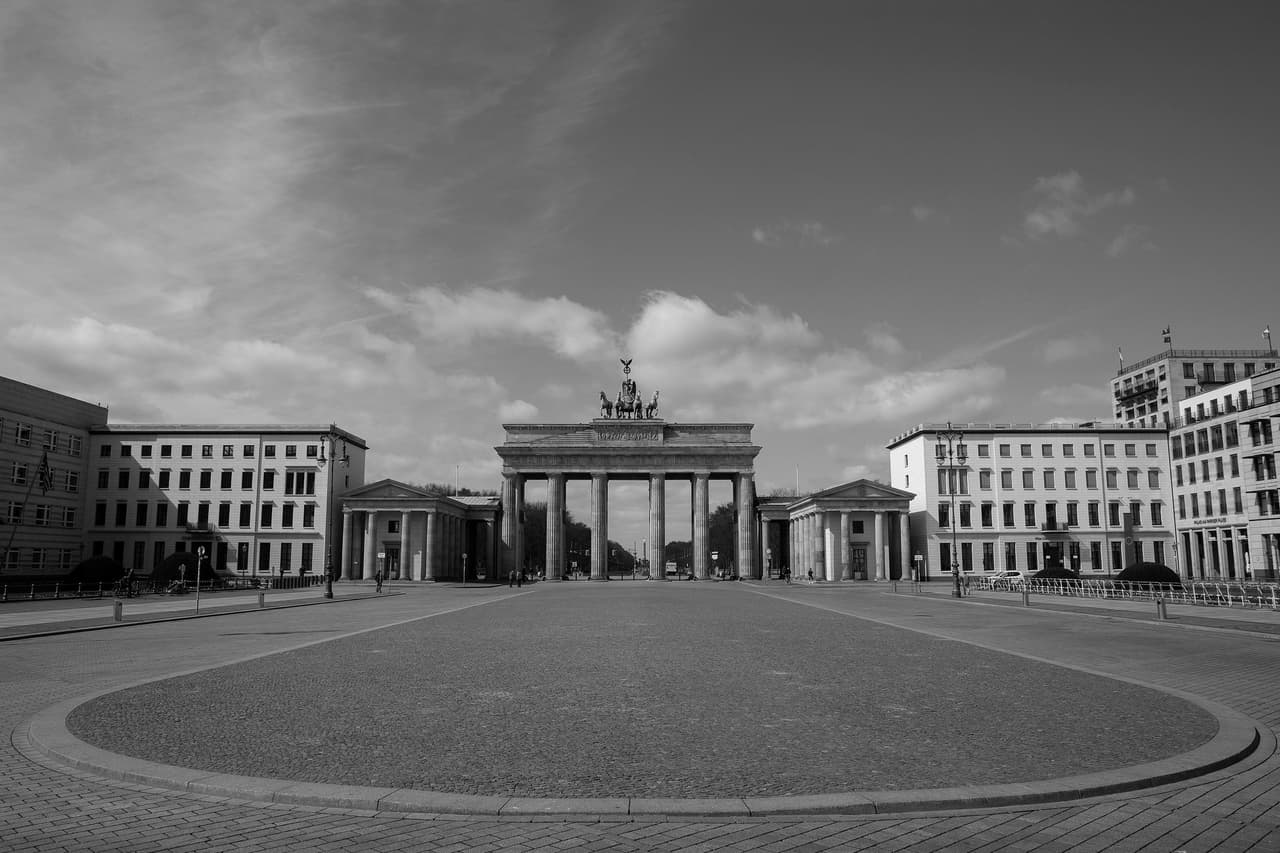
“Several European countries had a strategic stock of masks that were outdated… Most of them were just destroyed”
“The PPE market is empty”
The commission first raised the idea of launching joint procurement of PPE with member states in mid-January. But it was not until the end of February, after global stocks had been severely depleted, that the plan was finalised.
The commission and member states were confident during the early weeks of the outbreak that the virus could be contained. “At the beginning, it was a Chinese problem,” an EU source said. Other coronavirus outbreaks – Sars in 2003 and Mers in 2012 – had largely affected Asia, not Europe.
At each health security committee meeting, the commission surveyed member states on their preparedness, such as the number of ICU beds and respirators available. No country had asked for more PPE, but at the end of January, the commission started speaking to them individually. Four countries said that they would need more if the situation got significantly worse in Europe.
On 5 February, the commission decided to launch a formal assessment of what PPE member states might need. It took two weeks, and a number of missed deadlines, for governments to hand over the information.
Meanwhile, the political focus was on how Europe could help China control its outbreak after Beijing asked for supplies. When European health ministers first discussed the virus on 13 February, there had been more than 46,000 cases reported in China, and less than 500 elsewhere in the world. Commissioner Kyriakides spoke of how the commission had already sent 12 tonnes of PPE and was now “connecting Chinese authorities to companies manufacturing protective equipment within the EU”.
Yet, only five days later, warnings of Europe’s dwindling supply of protective equipment began to emerge. Experts from public health authorities across the region gathered at the ECDC’s headquarters near Stockholm. It would be the last time that this advisory forum would meet in person.
Among the attendees was Osamah Hamouda from the Robert Koch Institute in Germany. He warned that the PPE market was “empty” and that it was “not easy to step up domestic production”, according to meeting minutes. Jaap van Dissel, a scientific adviser to the Dutch government, said that there was “little PPE available”.
Despite this, Lenarčič’s crisis team at the commission sent equipment donated by member states to China via the EU’s Civil Protection Mechanism throughout February, in the hope that the virus would be contained there.
At the beginning of the month, an aircraft sent to China to repatriate French and German citizens also carried 12 tonnes of PPE to help with the outbreak. Italy sent 1.5 tonnes on 14 February and France delivered a 20-tonne cargo of surgical masks, gloves, thermometers and disinfectant five days later. The final flight departed Vienna on 23 February, carrying 25 tonnes of PPE.
“While we continue to ensure a high level of preparedness in the EU and support member states, the protection of health for all will always remain a top priority and we will continue to remain in solidarity with China,” Kyriakides said.
But a source told the Bureau that a colleague warned the commission about the potential risk of sending PPE to China in February. He apparently said: “Pay attention to what you are doing because we will need them ourselves.”
By 23 February, four regions in the north of Italy had reported cases with no clear link to China. A number of EU sources told the Bureau that they realised a crisis in Europe was looming. Just 48 hours after the aircraft had taken off from Austria, 20 member states had signed up to the joint procurement scheme launched by the commission to source more PPE, which had now been in the works for a number of weeks.
By 26 February, the virus had killed 11 people in Italy and the situation was getting more dire. Intensive care units risked being overrun. The Italian government sounded the alarm and reached out to Lenarčič’s team for more PPE through the Civil Protection Mechanism. But no member states were now willing to donate their precious stocks.
It became obvious at this point, Lenarčič said later, that the commission was not fully aware of the real situation regarding PPE. “That real situation became clear when there was no response.”
A spokesperson for the commission told the Bureau: “The fact that initially no member state responded to Italy’s request for assistance in the form of personal protective equipment... at the end of February was a moment of bitter truth for the commission.”
With many countries’ emergency stockpiles running low, there was now an urgent need across Europe. Member states individually contacted Chinese manufacturers, creating fierce competition for the joint procurement scheme. In an attempt to reassure member states, commissioner Kyriakides said on 6 March – a Friday – that she expected to get offers by early the following week. But a source who was involved said that based on prior experience they realised it might take months for the scheme to deliver any goods.
By Thursday 12 March, the scheme still hadn’t secured a manufacturer. A notice was posted to the EU’s contract database: it had failed to find a supplier. It would not be until almost two weeks later that the scheme would successfully find one. The first delivery of masks under the scheme was on 8 June.
The commission told the Bureau: “The commission has mobilised all resources available at its disposal to help member states. The prerogative for action in public health still remains with member states and the commission cannot overstep their competence.
On a general note, epidemics need to be contained as soon as possible after their outbreak at the epicentre. Hence at the beginning the assistance was directed to China.”
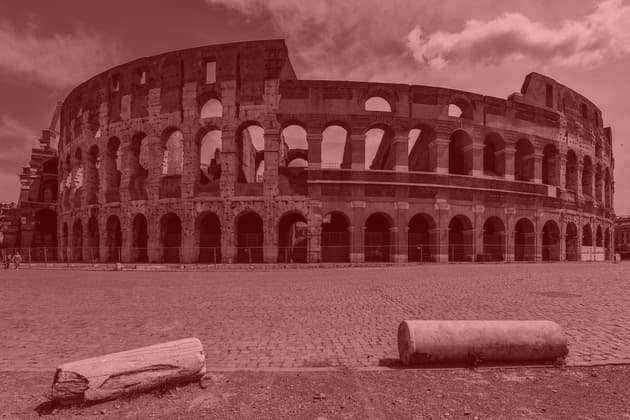 Italy was the first country in Europe to document a large number of Covid-19 cases
Getty Images
Italy was the first country in Europe to document a large number of Covid-19 cases
Getty Images
Testing times
When an otherwise fit 38-year-old man with a cough, fever and shortness of breath walked into the emergency room at a hospital in Codogno, a small town south of Milan, on 18 February, it was Dr Annalisa Malara who was on shift. Malara prescribed him some antibiotics and the man returned home, refusing to stay the night in the hospital.
A few weeks earlier the Italian government had told doctors to test anyone “who shows an unusual or unexpected clinical course… without regard to place of residence or history of travel”, based on advice from the WHO at the time. But that advice had changed, and now Malara’s patient did not qualify for a test. The WHO and ECDC told doctors to only test patients with symptoms who had recently travelled to China or had contact with another person with Covid-19. Member states had been encouraged to align their testing guidelines, which Italy had done on 27 January.
On the same day that Malara first saw her patient, the ECDC’s advisory forum met near Stockholm. It was likely that there would be many cases that would be missed and the coronavirus could not be contained, one attendee warned. It’s likely it would spread across Europe, said another.
Epidemiologists have since said that it is likely the virus was spreading in communities across Europe as early as January, going largely undetected while the commission was making assurances about member states’ readiness to handle an outbreak. An ECDC spokesperson told the Bureau that at that time “there was no evidence of general transmission occurring in the community”.
The ECDC’s director Andrea Ammon told European health ministers on 13 February that there was a “substantial” capacity to detect cases in Europe. In reality, experts were aware that there should be wider testing to find all the cases – but resources were lacking.
Mike Catchpole, the ECDC’s chief scientist, told the Bureau that broader testing would likely pick up more positive cases but, with Europe in peak influenza season, it would also drastically increase the number of people testing negative, wasting precious coronavirus testing kits.
Ammon had perhaps not fully appreciated that a lack of basic equipment and capacity for contact tracing, rather than the number of laboratories, was creating a severe bottleneck for testing. An attendee of the advisory forum meeting told the Bureau: “Really, it was the material that was missing – the swabs for taking samples and the chemicals that you need to do the testing.”
At the end of the two-day meeting, it was agreed that the testing guidelines would be updated, but this was not finalised for another week.
On the evening of 18 February, the 38-year-old Italian was back in hospital. By 20 February, he was admitted to the intensive care unit and ventilated. His wife told Malara that he had recently been to dinner with a colleague who had come back from China. Malara immediately suspected coronavirus but he still did not fit the testing criteria. She and colleagues decided to take a swab anyway.
The sample was sent to Milan at noon. By 9pm the results were in: it was positive. The result, Malara later wrote in a blog post, “triggered the national emergency”.
By the time the advisory forum met again on 24 February, Malara had worked 36 hours straight in quarantine, fearful of infecting her colleagues and other patients.
Health officials in northern Italy had also decided to ignore the guidelines. They began testing people without symptoms and found that the virus had been spreading among the local population.
It was clear that Europe was facing a much bigger outbreak than previously thought. The ECDC needed to update its testing guidelines. Up until that point, WHO and ECDC advice had been very closely aligned. A WHO official told Catchpole that it was also updating its guidelines but couldn’t provide any more details or when the revisions might be published.
“We felt we couldn’t wait [for the WHO] because there was clearly this clarification needed,” Catchpole told the Bureau. He asked the advisory forum again about broadening the testing guidelines. The group found a compromise.
The WHO listed more than a dozen countries, including four in Europe, where the disease was now believed to be spreading locally. The updated ECDC guidelines on 25 February named just four regions in northern Italy and six countries in Asia.
Despite the ECDC recognising that mild and asymptomatic cases meant the true number of infections was likely much higher than reported, people with mild symptoms would only be tested if they had travelled to the places on its list. (Those with severe symptoms would be tested regardless.)
This was “an accurate reflection of the situation as understood by ECDC and our partners in EU member states”, an ECDC spokesperson said.
The ECDC did not adopt the WHO’s longer list of countries until 2 March.
Some now began to ask if Italy’s high case load was down to more testing. By 25 February, Italy had conducted more than 4,000, 10 times that done by France, for example. If you look for cases, local Italian officials said, you will find them.
Pierluigi Lopalco, an epidemiologist at the University of Pisa who until 2015 worked at the ECDC, told the Bureau that isolating all people with pneumonia who had tested negative for seasonal influenza would have had a significant effect on the impact of the virus in Europe.
“As soon as we had news from China, we should have worked to identify the virus’s arrival in Europe,” said Lopalco. “Starting with screening people who were hospitalised for pneumonia and isolating them, even when we did not have the tests yet.”
Early failures in surveillance meant that we did not know when the virus entered the EU, Lopalco said, making it difficult to act quickly to contain its spread.
“When Italy first discovered the virus in its population, there was already an avalanche of cases,” said Stefania Salmaso, former head of the Infectious Disease Epidemiology department at the Istituto Superiore di Sanità in Rome. “It was too late for proper contact tracing.”
By 2 March, coronavirus had infected more than 2,000 people in Europe – the majority in Italy, where 35 people had died. But how many cases had been missed and how widely was the virus spreading? “From that moment on, we quickly understood that it wouldn’t stay in Italy,” an EU source said. “Everybody understood it was about to become a European problem.”
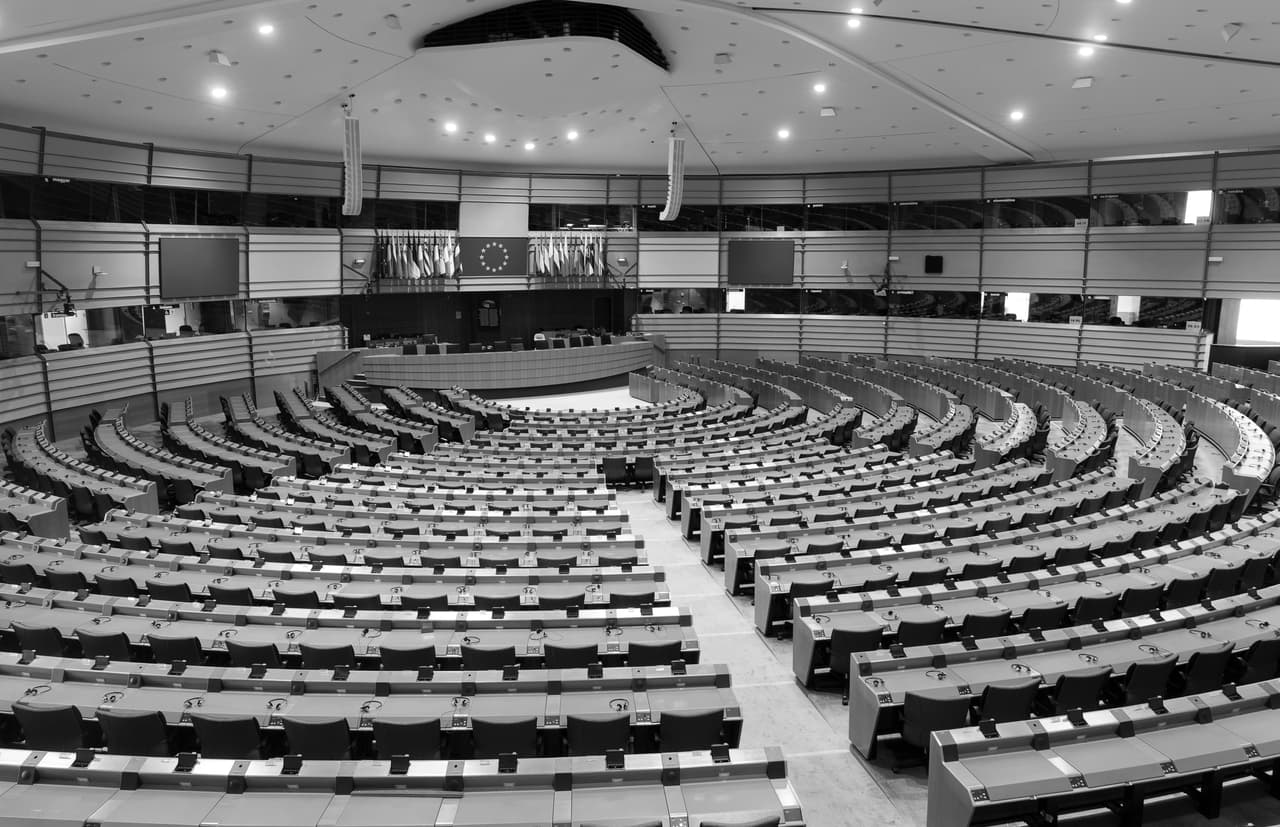
“When Italy first discovered the virus in its population, there was already an avalanche of cases. It was too late for proper contact tracing”
“The situation has changed drastically”
On 2 March, Ursula von der Leyen, president of the commission, stepped in. At a press conference she walked to the lectern to the click of camera shutters. “Come on,” she was heard to say as she gestured to the five commissioners, who had hesitated to follow. She looked around and nodded to Lenarčič as they filed in behind her.
“ECDC has announced today that the risk level has risen to moderate to high for people in the European Union,” she said. “In other words, the virus continues to spread.”
Von der Leyen announced a new coronavirus response team. It was long overdue, sources told the Bureau, and the commission had to work hard to regain control of the European response to the crisis. The number of cases in Italy was doubling every few days. France and Germany had both reported more than 100 cases and there were hundreds more across Europe.
The team immediately faced problems. Now in crisis mode, European countries imposed restrictions on the export of key medical supplies to neighbours. On 3 March, France’s president, Emmanuel Macron, announced that he was requisitioning “all stocks and the production of protective masks”.
The next day, the German government banned the export of PPE, despite the health minister Jens Spahn saying three weeks earlier that there was “little point in taking unilateral measures”.
The spirit of cooperation had evaporated, and with it, the hope of a coordinated European response.
In total, 15 member states placed some sort of restriction on the movement of equipment or drugs within the EU during the outbreak. (Some, but not all, have now been lifted.) Trucks of masks, gloves and protective gowns were stopped at some borders. European leaders accused each other of undermining EU solidarity and the single market.
One EU source said that the closing of borders was the “biggest problem” during the crisis. PPE shipments destined for EU countries that arrived in ports in Germany and France were “very simply stolen… What France and Germany did is completely against European law.”
The commission told the Bureau: “Despite the fact that the commission only has a supportive role in matters of health, civil protection and border management, it undertook the initiative in the first chaotic reactions by the member states at their borders and prevented the worst – the complete standstill of movement of most essential goods and people.”
The Belgian and Dutch governments were also buying up the ingredients to make key drugs and delivering them to hospitals to be produced on-site. With a limited supply of these ingredients in Europe, this hamstrung efforts by the pharmaceutical industry to increase the manufacture of medicines needed to treat the most severe coronavirus cases.
By the time European health ministers attended a second council meeting on 6 March, “the situation had drastically changed”, the Croatian minister of health said. Commissioner Kyriakides, flanked by Lenarčič and Thierry Breton, commissioner for the internal market, stressed the importance of European solidarity. “I ask you all today to commit to us all working together, openly and transparently, in a spirit of solidarity to ensure a coherent political response,” she said.
Throughout this period, the health security committee continued to meet for just an hour weekly. As there was “not a lot of time” and it was deemed a “political discussion”, the export restrictions were not discussed, an attendee told the Bureau.
“I think most of the experts in this committee agreed that this was not the correct, nice way to handle [the crisis],” they said. The commission worked to unpick these restrictions but some have remained in place, most notably France’s requisition order for PPE, which was considered to be “proportionate”.
Ten days after creating the response team, Von der Leyen convened her own group of experts. By now, Italy had been in lockdown for three days, after registering more than 12,000 cases and some 800 deaths. European governments were on the verge of closing borders to everyone.
The events of the previous week showed that cooperation remained a problem. Meeting notes stressed the “need for more European coordination and harmonisation”. But it was too late to contain the virus. On 12 March, Von der Leyen’s group of experts told her that it was no longer possible to stop the outbreak in Europe.
The next day, the head of the World Health Organization said that Europe was now the “epicentre” of the global coronavirus pandemic.
“We need to do something about this together”
Now, six months since that first meeting of the health security committee on 17 January, member states are slowly lifting restrictions. There are renewed calls for coordination.
Europe was plunged into crisis in part because of a shortage of basic equipment. One commission official said that they are already thinking about how they might respond better to future threats to health.
“What we have in mind is not just to focus on Covid, but to extend the stockpile of more varied drugs, countermeasures, equipment and vaccines to cover other types of corona, Ebola and other niche epidemics which member states are not necessarily interested in investing in,” they said. “The idea is to have a number of stocks distributed regionally, to shorten the distances, to be more effective in the response.”
And when there is a global shortage of PPE, that is “the moment to start to really work together at a European level”, an EU source said – to choose cooperation over protectionism. They suggested the option of a “crisis mode”, which would give the commission more power to implement measures during a pandemic.
An attendee of the health security committee called on member states to send higher ranking officials to meetings and to recognise the importance of EU coordination.
“When this all started, I was almost looking forward to it,” they said. “I thought that this is something where we can really prove ourselves... But I’ve been frustrated so often, so many times.
“I think where I’ve been positive and even happy are the initiatives where the big countries of the EU have sat down and said: ‘We need to do something about this together.’”
Header image: Eleanor Shakespeare for TBIJ
This story was published in partnership with The Guardian, Suddeutsche Zeitung, NDR/WDR, El Mundo, L’Express, Il Fatto Quotidiano, De Tijd and Jutarnji List.
This article is part of our Global Health project, which has a number of funders including the Bill and Melinda Gates Foundation. None of our funders have any influence over the Bureau’s editorial decisions or output.






